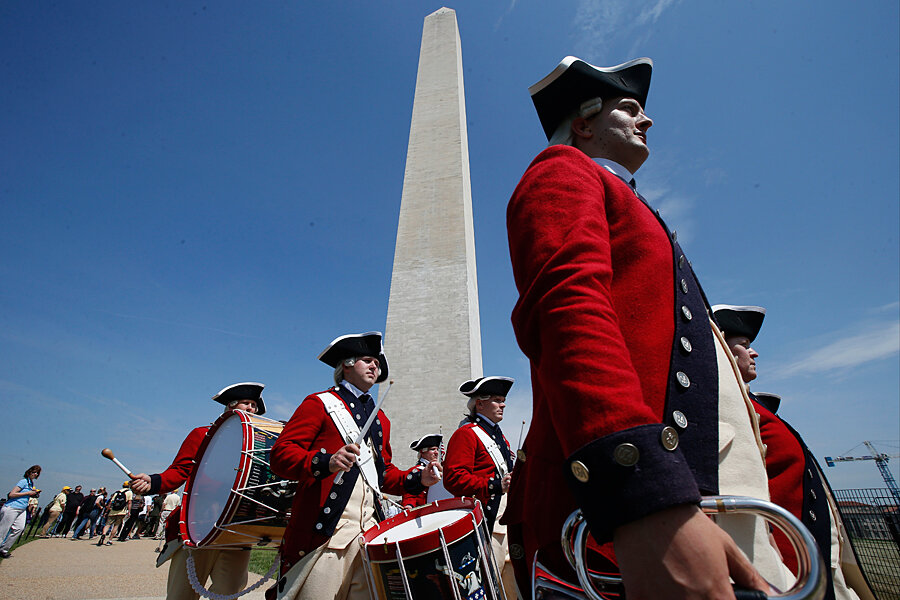Washington Monument reopens. Here's where to go when the line is too long.
| Washington
The Washington Monument is reopening on Monday. It has been closed for repairs for almost three years after being damaged in the 5.8 magnitude earthquake that hit the East Coast on Aug. 23, 2011.
The shroud of scaffolding – which was beautiful in its own way – is gone from the 535-foot-tall stone obelisk. Workers have patched the cracks that developed in the monument’s mortar and marble. New exhibits are installed around the base, and the elevator that carries visitors to the top is once again running.
All this work cost about $15 million. The federal government paid half, and businessman and philanthropist David Rubenstein paid for half. That generosity hastened the reopening.
The “Washington Monument symbolizes many things for our country ... freedoms, patriotism, George Washington, leadership,” Mr. Rubenstein, who earned millions as CEO of The Carlyle Group, told the Associated Press.
Here’s a problem neither Rubenstein nor the National Park Service can solve: the Washington Monument’s popularity. As an icon of American history, it’s a tourist magnet. It gets about 700,000 visitors per year. The space at the top of the elevator is not very big, so that’s a lot of folks to hoist up and down the monument spine.
Also, during peak tourist season it is always hot in Washington. Then you’re stuck at the end of a long line for the elevator, with the kids clamoring for something to do. This is why actual Washington residents seldom visit the thing, in our experience.
Here’s what we do instead. Take this as a tip in case you just can’t wait more than an hour.
The National Portrait Gallery. Cool, dark, free, and relatively uncrowded, this Smithsonian museum has a lot of famous paintings of presidents that everyone will recognize, as well as fun special exhibits. It’s at 8th and F Streets Northwest, so take a cab from the monument grounds. It’s a short walk to the (pay) International Spy Museum, if the kids want a little more excitement.
The Freer Gallery. Also cool, dark, free, and relatively uncrowded. Trust us, those qualities will seem more important after a stint outside in the D.C. summer than they perhaps do now. This Smithsonian museum is not that far from the monument, and you can walk there if you’re sturdy. It contains The Peacock Room, a beautiful installation done by James McNeill Whistler in the late 1800s.
The National Cathedral grounds. If you’ve got a car, drive to upper Northwest D.C. and have a picnic at the National Cathedral at the intersection of Massachusetts and Wisconsin Avenues. A beautiful view of the city is spread out below, and no crowds. Also, there is shade. Tell the kids to look for the Darth Vader gargoyle on the Northwest Tower.
If you don’t want to give up your place in the Washington Monument line, you can always send fidgeting people on a walk up to the Lincoln Memorial, which remains one of the world’s great vistas. By the time they get back, it might be just about time for your tour in D.C.’s most popular elevator.







